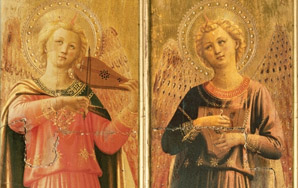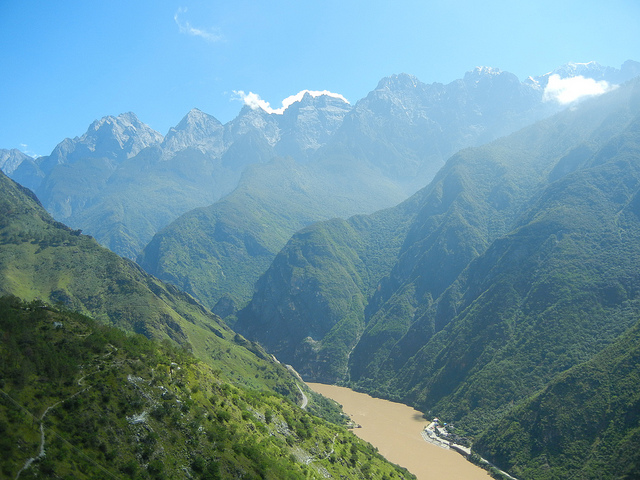Edward Lucie-Smith: The Glory of Angels
Edward Lucie-Smith’s The Glory of Angels is a sumptuous feast for the eye and spirit, a volume carefully researched, knowingly written, and elegantly illustrated, no illuminated. It’s an oversized (11” x 14”) production, a coffee-table book so beautiful that care must be taken that neither coffee nor any other beverage be spilled upon it.


Edward Lucie-Smith’s The Glory of Angels is a sumptuous feast for the eye and spirit, a volume carefully researched, knowingly written, and elegantly illustrated, no illuminated. It’s an oversized (11” x 14”) production, a coffee-table book so beautiful that care must be taken that neither coffee nor any other beverage be spilled upon it. Priced at $35 it is an investment well worth making.
Once you open the cover, a diptych panel with a graceful, glowing angel on each side, you enter a realm of intense and radiant beauty. Though it is impossible, try just to let the pages flutter through your fingers and partake of a moving panorama of heavenly hosts in glorious, profusion. Representations of these remarkable angelic intelligences drawn from several centuries and many cultures – Christian, Hebrew, Islamic, Buddhist, Hindu – create a shimmering, full-color spectacle.
Lucie-Smith, an internationally-renowned art critic and practicing photographer, splashes the opening pages with a dazzling gathering of images – a golden shower of Italian angels (Gentileschi, Luti, and Gatti) interspersed with Russian (Chagall and the icon tradition) and American (Tiffany) renderings that prepare the palate for the feast that follows. The volume is organized into eight gorgeous chapters, really courses, for this heavenly banquet; each chapter’s collation of images vibrates round a topic, e.g., “The Heavenly Kingdom,” “Dreaming of Angels,” “Fallen Angels” – for which he supplies just enough learned commentary to enhance appreciation for the pictures. My own favorite chapter is “Archangels,” a stunning gallery devoted to Michael, Gabriel, and Raphael.
Some of the images you’ve likely seen before, many you’ve not. Some of the commentary may retrace familiar territory, some of it does not. In the last regard, notice particularly the chapter entitled “Angels from Many Lands” with its four part division into “Islamic Angels,” “Angels in Senegal,” “Ethiopian Angels,” and “Angels in Jamaica” – all new material to this reader. My own understanding of this phenomenon of the heavenly messenger was enriched and expanded considerably by Lucie-Smith’s multi-cultural, multi-religious perspective. Nor did I realize much about angels in contemporary works of art – indeed, if asked, I would have been hard-pressed to cite much more than Chagall’s work; but when I read “Angels in the Modern World,” with its illustrations drawn from unexpected artists like Keith Haring and Ron Mueck, I was enlightened.
Reading The Glory of Angels is a learning experience that delights both eye and heart while refreshing the spirit. A collateral benefit might just be a reawakened belief in these sacred guardians sent from on high, of whom St Francis de Sales wrote, “Make yourself familiar with the angels and behold them frequently in spirit; for without being seen, they are present with you.” ![]()




